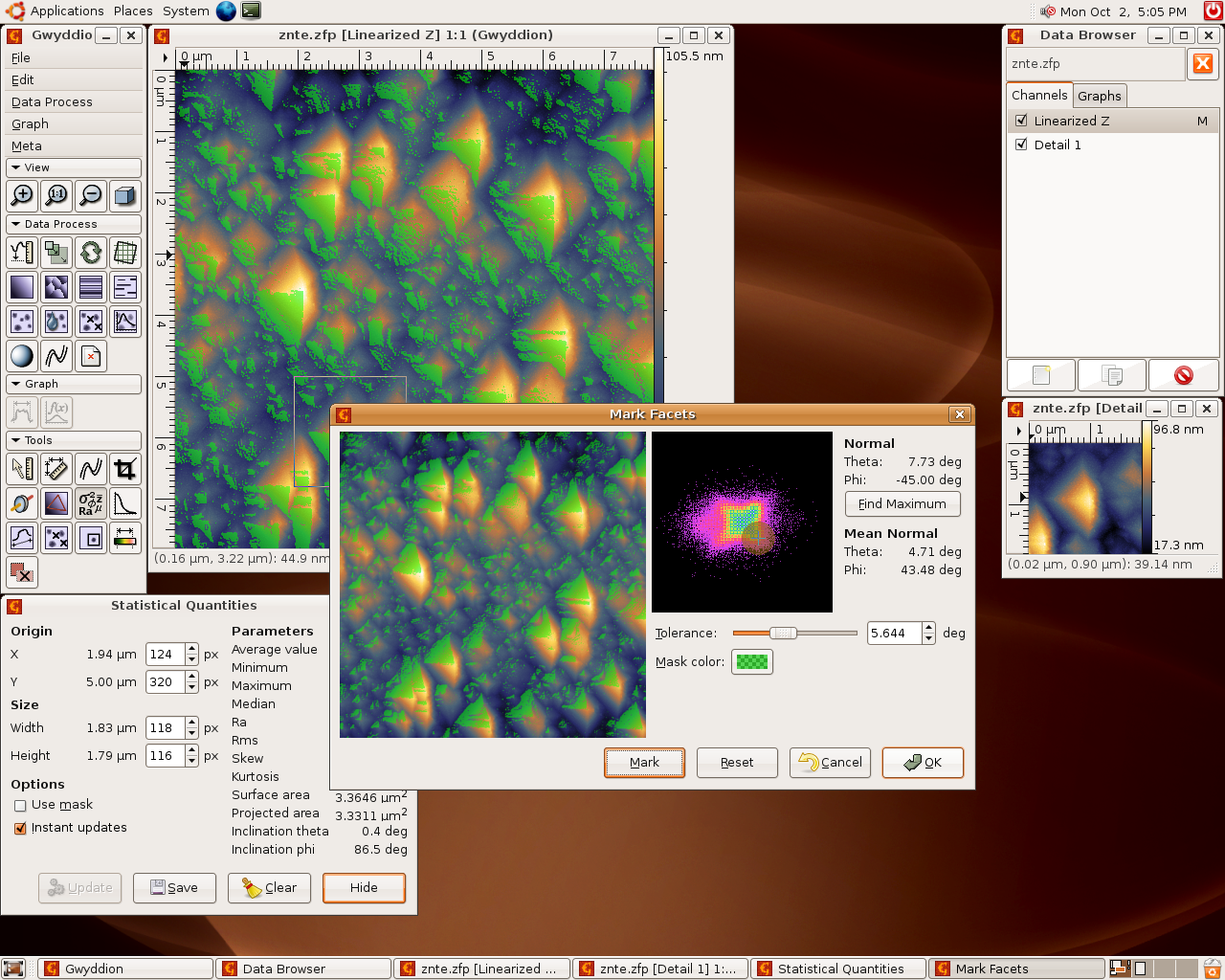Software development
In our research we pay attention to the development of different software tools dedicated almost for our own needs (molecular dynamics code,
finite difference method, etc.). Some of the programs grew with time into larger projects which can be used as open source applications by other users.
Gwyddion
The Gwyddion program [1] has been developed since 2003. During this time it became an adequate
multiplatform set of tools for SPM data analysis and visualization which is used by thousands of users all around the world. Although it should be originally a simple
tool for quantitative microscopy focused on the needs of metrology institutes, the areas of Gwyddion employment are much larger. The key element of the
development of the program is the cooperation with David Nečas (Masaryk University) who writes the majority of Gwyddion code nowadays. Our department tries in present
to search for and develop new methods of SPM data analysis which could be integrated into Gwyddion.
The Gwyddion capabilities in SPM data analysis are huge, the most important ones are summarized on the
web pages of the project.

Screenshot of the Gwyddion program
Somewhat ignored property of Gwyddion is still the possibility to use its libraries for the SPM data analysis and visualization. We use Gwyddion
in this regime e.g. for the construction of a steering software of our microscopes or devices used for nanoindentation.

Screenshot of the steering program of the device used for nano/microindentation
Gsvit
The Gsvit program is a newly developed tool for a calculation of electromagnetic field propagation
using the Finite Difference in Time Domain (FDTD) method. Its main advantage is the possibility to run calculations on computer graphics cards benefiting in principal
speed up of the simulations.
The FDTD method is in present one the most popular approaches for Maxwell equations evaluation. The components of the electric and magnetic field
are calculated successively in time, therefore it is primarily a simulation of electromagnetic field propagation and not a calculation of its steady state (even also
such results can be obtained). The benefit of this method is that it can be used for nearly all materials and geometries.
The core of the Gsvit package is a simple computational program run from the command line. It will be extended by graphical user interfaces
for solving of particular problems during next months. The computational core itself is however a completely universal tool that can be employed in any numerical electrodynamics
calculation.
Niget
Niget [2] is a free, multiplatform software tool for evaluating data from nanoindentation
measurements, consisting of independent analysis components which share a common graphical user interface.
It features nonlinear function fitting able to take account of measurement uncertainties and uncertainty evaluation. Presently available tools include
Oliver-Pharr method, tangent (Doerner-Nix) method, Hertzian elastic contact model, two slopes method, stiffness evaluation, F vs h2 evaluation,
pop-in detection, calculation of elastic and plastic work.
[1] David Nečas, Petr Klapetek, Gwyddion: an open-source software for SPM data analysis,
Central European Journal of Physics 10(1) (2012), pages 181-188. DOI: 10.2478/s11534-011-0096-2
[2] Anna Charvátová Campbell, Petr Grolich, Radek Šlesinger. Niget: Nanoindentation general evaluation tool,
SoftwareX 9 (2019), pages 248-254. DOI: 10.1016/j.softx.2019.03.001
|

